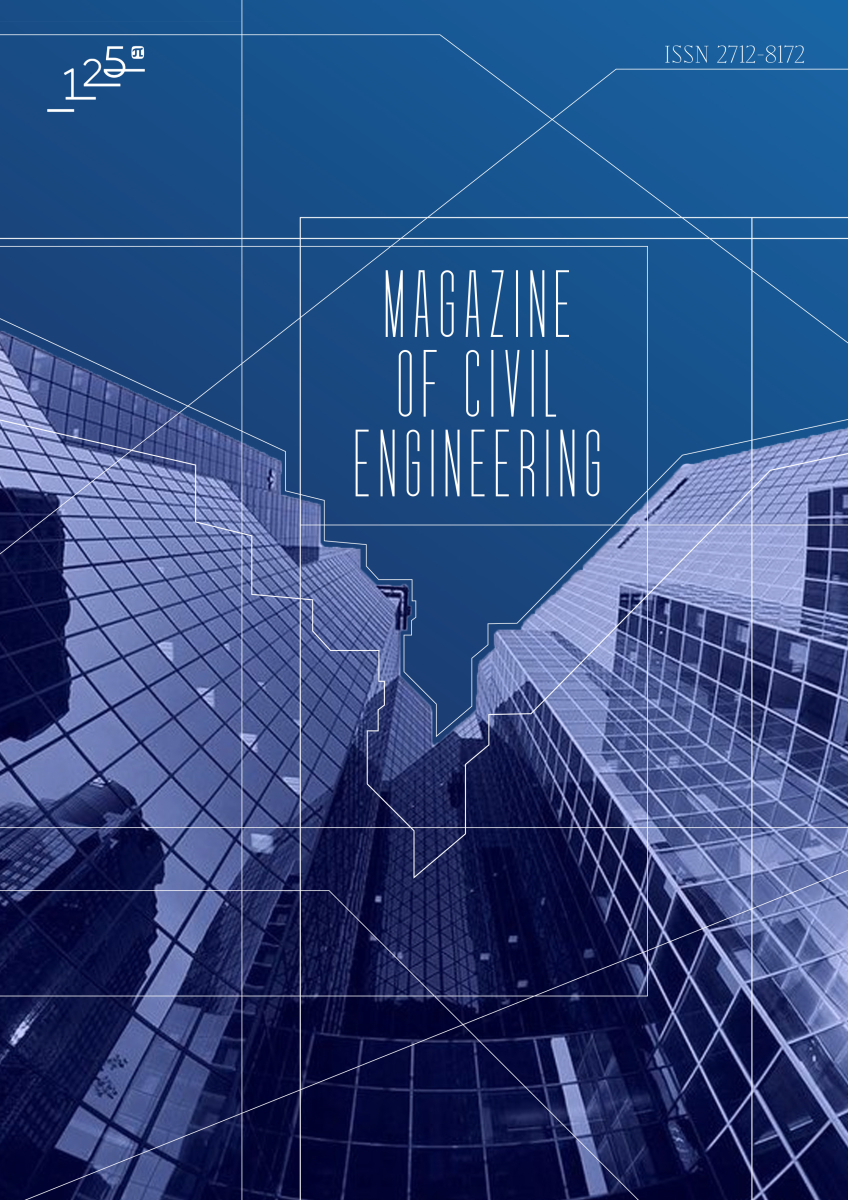Behavior of heat damaged reinforced recycled aggregate concrete beams repaired with NSM-CFRP strips
The behavior of heat damaged Recycled Aggregate Concrete (RAC) beams repaired with NSM-CFRP strips is the subject of this experimental study. The effect of heat damage on the RAC beams and the post-heating residual strength of beams were studied and compared with natural beams. Different volumetric percentages (0 %, 25 % and 50 %) of coarse Recycled Concrete Aggregates (RCA) were used in three concrete mixes (N, R25 and R50), producing a total of 16 reinforced beams having the same cross-section (100 mm×150 mm×1150 mm). Specimens were exposed to two levels of heat, 25 °C at ambient air and 400 °C for a three-hour period. The post-heating residual strength of RAC beams was studied and compared with natural ones. The flexural test conducted indicated a reduction in the load carrying capacities and stiffness due to mechanical deterioration in concrete properties and bond strength. The reduction in stiffness increased as RCA content increased due to a large amount of weak decomposed cement mortar in the RAC. The NSM-CFRP strips technique was used with epoxy adhesive for strengthening/recovering the flexural capacities of intact/ heat-damaged RAC beams. Four groups of simply supported beams were tested in a four-point bending test; the enhancement/reduction in strength and the mechanical properties were recorded. Results indicated that strengthened beams showed comparable behavior with those made with conventional concrete at room temperature. On the other hand, the behavior of repaired beams after being exposed to 400 °C showed different failure modes depending on the RCA percentage and the repairing configurations. RAC with higher RCA replacement ratio has a lower bond strength and therefore, a larger slippage was reported. The weak bond between the epoxy adhesive and the surrounding concrete caused the reduction in stiffness. Finally, using NSM CFRP with two strips at the sides (one strip at each side) for strengthening and repairing of intact/heat-damaged RAC beams resulted in slight improvement of the load carrying capacities. It reduced the induced strain in the CFRP strips to about 40 % of its value when a single concentrated strip at the bottom is used, and minimizing the slippage due to lower stresses and strains in the CFRP strips.


